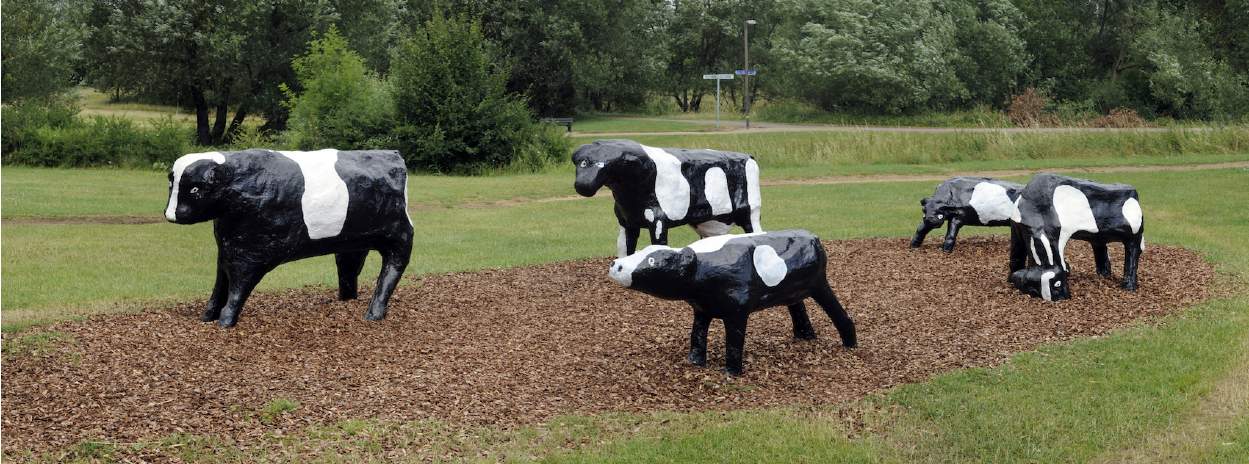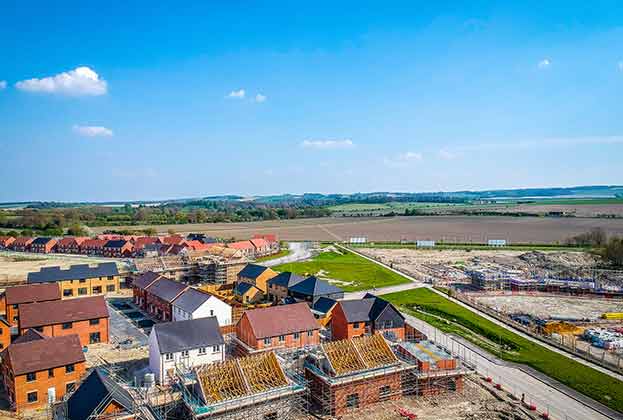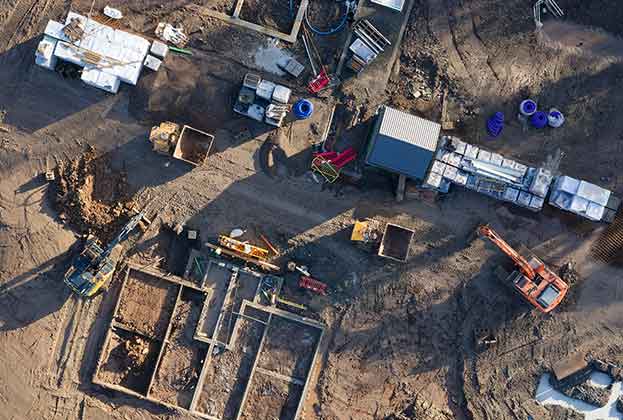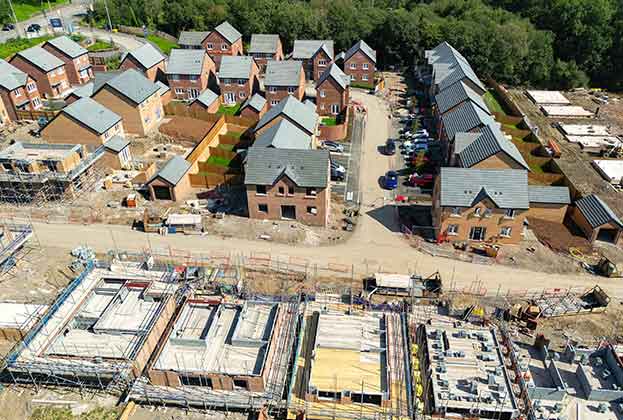Just 52 years old, Milton Keynes was created as a 20th-century new town to help solve the shortage of housing in the capital.
It’s home to the Open University, the MK Dons, Red Bull Racing and those iconic concrete cows sculpted by the Canadian artist Liz Leyh in the late seventies, pictured above.
One way to tell you’ve arrived is the sheer number of roundabouts and the H (for horizontal) and V (for vertical) road signage which reflects Milton Keynes’ distinctive grid system.
Beyond that, it’s the fastest growing city in the UK with a population projected to increase from 270,000 in 2018 to 500,000 by 2050 and with productivity almost 45 per cent higher than the national average outside London.
Crucially, it occupies a strategic, central location in the internationally important Oxford-Cambridge Arc, an area of land with a key role to play as the UK keeps pace with a rapidly changing global economy.
The pattern of future growth will be concentrated in this mid section which has the greatest potential for rapid expansion, aided by fewer land constraints and the intersection of planned new infrastructure with existing links to London and Birmingham.
Creating a focus for innovation as well as residential and commercial development at Milton Keynes will be bolstered by a new university which is set to open in 2023 and will have 5,000 students focused on science, technology and engineering. Built in the centre of Milton Keynes, the university will form an important part of the plans to densify the area and will enrich the Arc’s already highly skilled labour pool.
The delivery of housing for a growing workforce lies at the heart of unlocking the Arc’s ultimate potential. All eyes will be on the new town that had its origins as a home for Londoners in the sixties to help overcome a significant housing challenge for the 21st century.
Further information
Read more: The Oxford-Cambridge Innovation Arc




.jpg)


.jpg)
.jpg)

.jpg)